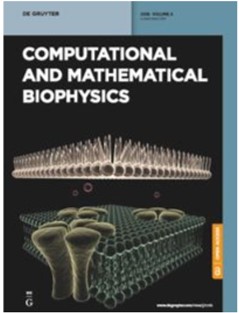
A New Understanding of Dengue Virus Behaviour at Cellular Level Using A Mathematical Model

Identifying the Issue
While there are vector-host models developed to study the dengue virus at population level, very few works performed to understand the dengue viral dynamics in human body. None of the current models as per our study has considered the role of innate immune response in the defence to the dengue viral attack until recently one of them by Rotem Ben-Shachar and Katia Koelle, introduced innate immune response and showed that it can reproduce the characteristic features of the primary infection.
In this paper, a non-linear model is proposed which incorporates innate and adaptive (both cellular and humoral) immune responses, studying the Dengue virus at cellular level using a mathematical model.
Objective of the Research
- We propose to study the dynamics of within-host epidemic model of dengue infection which incorporates both innate immune response and adaptive immune response (Cellular and Humoral)
- The proposed model also incorporates the time delay for production of antibodies from B cells and understand the dynamics of this model using the dynamical systems approach by performing the stability and sensitivity analysis
- Both the above can help detect and control the dengue virus better and understand the dengue viral dynamics in human body
Who should read this?
Those working in the field of Mathematics, Bio-Mathematics, Mathematical Modeling, research, and other related academic fields, and Doctors, especially Physicians.
Solution
The critical level of the antibody recruitment rate(q) was found to be responsible for the existence and stability of various steady states. The stability of endemic state was found to be dependent on time delay. The sensitivity analysis identified the production rate of antibodies (q) to be highly sensitive parameter.
- The existence and stability conditions for the equilibrium states of the disease have been obtained
- The threshold value of time delay has been computed which is critical for change in stability of the endemic state
Key Features and Benefits
- It has been observed that that innate response co-relates with the virus titer in the early stages of the infection which can help in an early detection of a serious disease
- The production rate of antibodies (q) was found to be highly sensitive
- It was observed that the burst rate of virus particles (k) has a predictable behaviour and the rate of infection(β1) is sensitive only in some interval range
Impact
- The works presented in this paper could enhance our understanding of this complex immune response
- The model can help in detection of the disease in the early stages of the infection
Team
- Deva Siva Sai Murari Kanumoori: University of L’Aquila, L’Aquila, Italy
- D Bhanu Prakash: Department of Mathematics and Computer Science, Sri Sathya Sai Institute of Higher Learning – SSSIHL, India
- D. K. K. Vamsi: Department of Mathematics and Computer Science, Sri Sathya Sai Institute of Higher Learning – SSSIHL, India
- Carani B Sanjeevi: Vice-Chancellor, Sri Sathya Sai Institute of Higher Learning -SSSIHL
Paper Published In: Computational and Mathematical Biophysics 9, no. 1 (2021): 66-80
Read Paper Here: https://doi.org/10.1515/cmb-2020-0118



